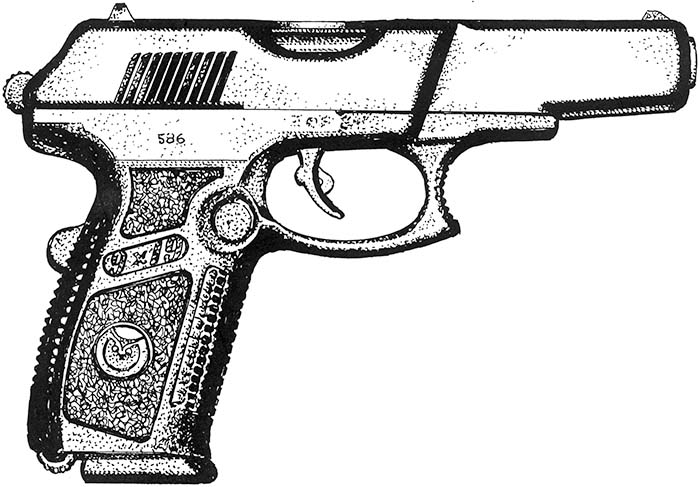By Robert G. Segel –
Much has been written about the sad state of affairs concerning the history of early machine gun development and acceptance by the military in the United States in the early part of the 20th century. While there was great experimentation going on due to the advent of the industrial revolution, many of the great American firearm inventors of the time such as Hiram Maxim, Isaac Lewis and Laurence Benét sought acceptance of their ideas overseas and it was the Europeans who embraced them. The United States, always slow on the uptake, did conduct tests and trials but could hardly ever make up their minds due to politics, lack of appropriated money and no real perceived threat or need. The U.S. Navy used the Colt Automatic Gun Model of 1895 designed by John Browning with some degree of success. The U.S. Army adopted the Automatic Machine Rifle Model of 1909 (Benét-Mercie) with 670 guns being produced by both Springfield Armory and Colt. The army later adopted the heavy Maxim gun which was designated as the Model of 1904 with a total of 287 guns being produced. The first 90 being made by Vickers, Sons & Maxim in England and the remaining 197 guns made by Colt. The U.S. also had 353 Savage Lewis guns chambered in the .303 British round for use along the Mexican Border in our action against Pancho Villa. All in all, not a very impressive national machine gun arsenal for the U.S. military in the early 1900s.
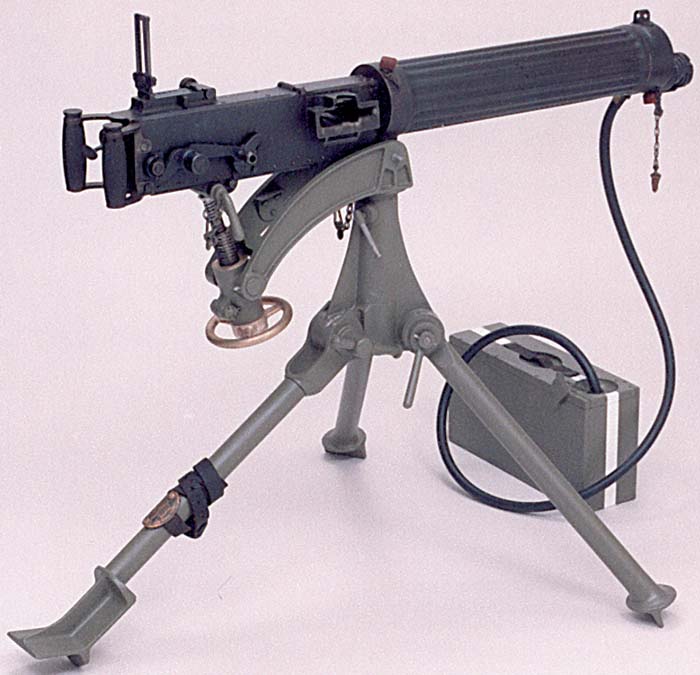
By 1913 the U.S. began to realize how vastly under-armed in automatic weapons it was and started a new series of tests. The new improved version of the Maxim gun, now called the Vickers, was the clear winner. The Vickers was based on the same operating principle as the old Maxim, except the toggle joint action was reversed, spent cartridge cases were ejected through the bottom rather than through an ejection port in the front and the overall weight of the gun was reduced.
In January of 1919, Captain John S. Butler of the Office of the Chief of Ordnance, Engineering Division, wrote a comprehensive report on the adoption, procurement, field tests and parts failures entitled “The Vickers Machine Gun Model of 1915, Caliber .30, Water-Cooled”. In his seventy-plus page report, Butler writes: “The Board of Ordnance & Fortifications held a meeting on March 15, 1913 to consider the adoption of a new type of machine gun…” He continues with: “The Board convened for the competitive test of automatic machine guns at Springfield Armory on September 15, 1913. Seven makes of automatic machine guns were considered and tried out. The Board consisted of two officers of the Infantry, one of the Cavalry, one of the Field Artillery and one of the Ordnance Department. This report will summarize the performance of only the three most important guns submitted to the test. The Lewis gun during the endurance test had 206 jams and malfunctions, 35 broken parts, 15 parts not broken but requiring replacement as against respectively 23, 0, 0, for the Vickers gun and 59, 7, 0 for the Automatic Machine Rifle .30, Model of 1909, the Benét-Mercie.”
The Board concluded, after careful consideration of the data collected, together with the knowledge of the suitability of the various designs of machine guns gained by observation during the test, that the Vickers Machine Gun and the Benét-Mercie machine rifle were the only two types sufficiently serviceable to warrant their entry into a field test. The following is quoted from the recommendations of the Board. “The Board is of the opinion that, with the exception of the Vickers gun, none of the other guns submitted showed sufficiently marked superiority for the military service, in comparison with the service Automatic Machine Rifle to warrant further consideration of them in the field test.”…. “The Board is of the unanimous opinion that the Vickers rifle caliber gun, light model, stood the most satisfactory test. As to the merits of the Vickers gun there is no question – it stood in a class by itself. Not a single part was broken nor replaced. Nor was there a jam worthy of the name during the entire series of tests. A better performance could not be desired.”
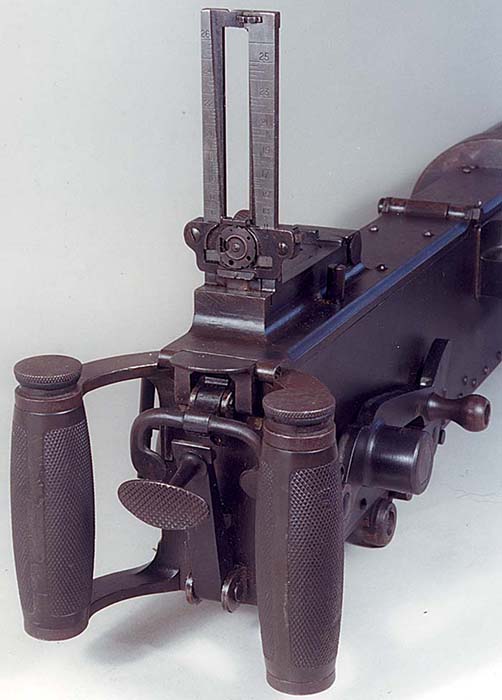
As a result of these initial tests in 1913 and the subsequent field tests conducted in 1914, the Board unanimously approved the type for the Army. In 1915 funds were secured for an initial order of 125 guns to be made by Colt’s Patent Firearms Manufacturing Company and the gun was designated as the Model of 1915. In 1916 more money was made available and an additional order for 4,000 Vickers manufactured by Colt was placed along with 960 pack outfits and accompanying spare parts and accessories even though the first order of 125 guns had not yet been made.
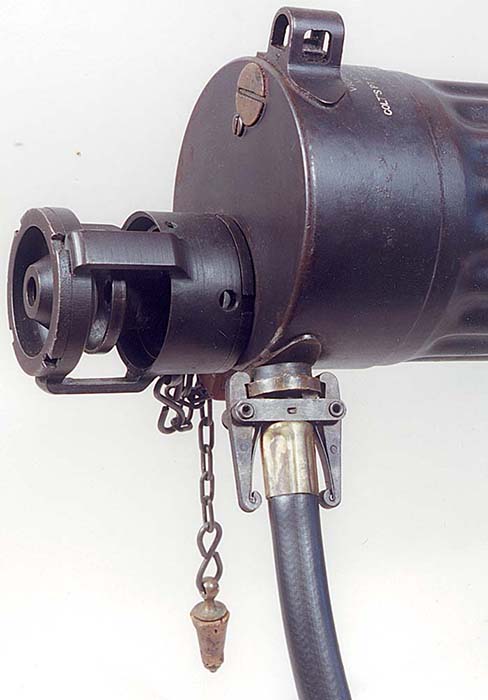
Colt, however, was not prepared to immediately tool up production on the Vickers for the U.S. Army. They had an order to produce Vickers for the Russians that they were behind on and were busy making other weapons as well, including the M1911 .45 pistol. There were also minor modifications and changes in design that needed to be worked out and approved. The Vickers was a relatively complicated gun to make. When the United States entered World War I in April 1917, not a single Colt Vickers M1915 had been delivered, though work was in progress.
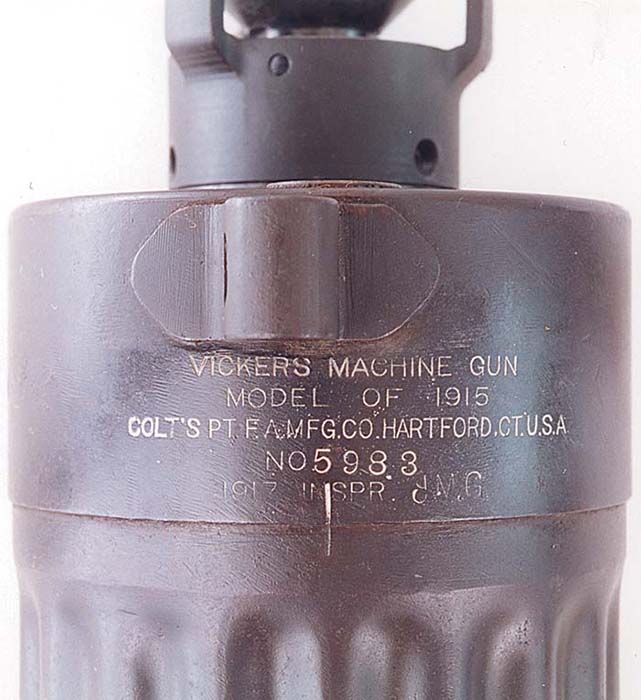
Hot on the heels of all this was the push to accept and produce the American designed Browning water-cooled machine gun, which would become known as the Model of 1917, that Colt was also tooling up production for. The Browning M1917 would replace the Vickers as the Army wanted an American-designed gun as its main heavy machine gun and the Browning design had fewer and less complicated parts making it more efficient to produce.
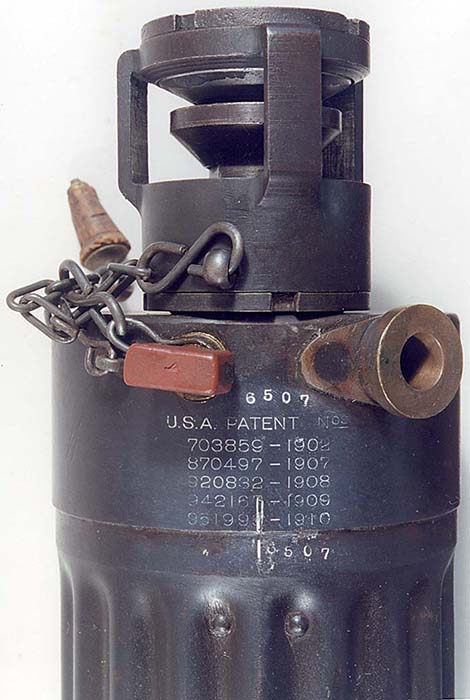
Colt finally started producing Vickers guns in late 1917 in the .30 caliber model and in 1918 expanded production to include the .30 caliber aircraft and then the 11mm aircraft models. By mid 1918 Colt Vickers guns started to be shipped overseas. The first twelve divisions arriving in France were issued the French Hotchkiss Model of 1914 machine gun though they had been trained back in the States using the Colt Automatic Gun 1895, Maxim Model of 1904 and the few U.S. Vickers that were available. It wasn’t until the next ten divisions sailed for France in May and June of 1918 that they were equipped with Colt Vickers. The next twelve divisions were supposed to be equipped with the new Browning M1917 but spare parts shortages prevented that. By August 1918, thirteen divisions were using the Colt Vickers.
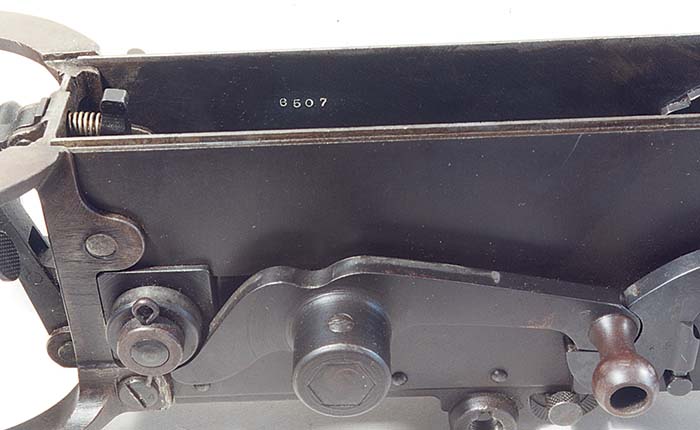
In all, 12,125 Colt Vickers M1915 ground guns were produced. Of that total 2,888 were converted to aircraft guns leaving 9,237 infantry ground guns. 7,653 were issued to the American Expeditionary Forces either in France or on their way to France. With normal loss due to war damage there remained after the war about 8,000 Colt Vickers M1915 ground guns in the U.S. inventory. These guns were held in reserve until World War II when 500 guns were sent to the Dutch East Indies and several hundred more were sent to the Philippines. These guns were ultimately lost or captured by the Japanese. The U.S. also sent about 7,000 Colt Vickers, plus ammunition, to Great Britain under Lend-Lease. In the dark early days of the Second World War, the British Vickers production was busy turning out guns to equip their regular army, especially after the huge losses of equipment at Dunkirk. The U.S. made Colt Vickers were relegated to the British Home Guard for national defense should that very real invasion emergency arise. The U.S. Vickers were painted with a two inch wide red stripe to differentiate the U.S. caliber .30-06 guns from the British Vickers .303 caliber guns. The red stripe was painted on the feedblock cover, around the mouth of the feedblock and on the lock (bolt). This pretty much depleted all Colt Vickers on hand in the United States inventory at the outbreak of World War II.
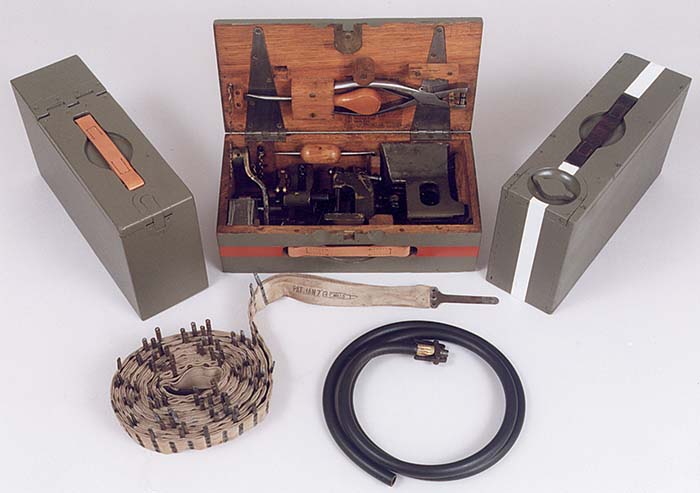
By the end of World War II, Great Britain had not been invaded and war production of British Vickers was at an all time high. British Vickers production guns that had been retired from active service replaced the Colt Vickers in use by the Home Guard. After the war, the U.S. Colt Vickers in Great Britain were unceremoniously destroyed and dumped into the North Sea.
In 1916, the Colt factory accepted an order through the British Government for the manufacture of a Russian Maxim Machine Gun, otherwise known as the Russian Vickers. The Colt company made up quite a number of the guns in the 7.62 Russian caliber and found them to function perfectly. In the meantime, before delivery could be made, the revolution in Russia terminated further work on these guns, which then lay in storage in the U.S. Early in 1918 a demand came from the Ordnance experts in France for an 11mm gun, especially designed for balloon work. The Colt factory found that the Russian Vickers, then on hand, could be altered to take the larger caliber cartridge. So it was that these Vickers were altered into 11mm caliber to augment the production of Model 1918 aircraft guns.
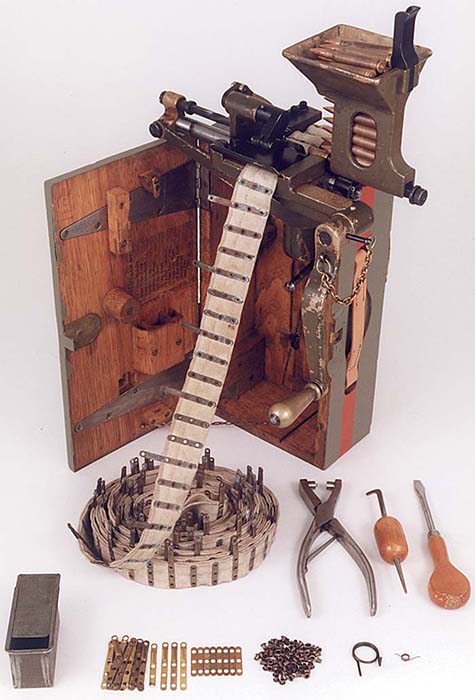
The 11mm cartridge was known as the French Desvignes cartridge, a development of the French Ordnance Department. The heavy 11mm bullet could carry a much larger charge of incendiary material than the smaller caliber rifle bullet used by the warring nations and so was more effective against the envelope of a gas balloon or dirigible. In the smaller bullet the burning core did not last long enough after leaving the gun to set fire to the hydrogen gas of the balloon bag. Instead, the result was simply a small round hole instead of a burning balloon. About 1,200 of these Model of 1918 11mm Vickers were delivered before the Armistice.
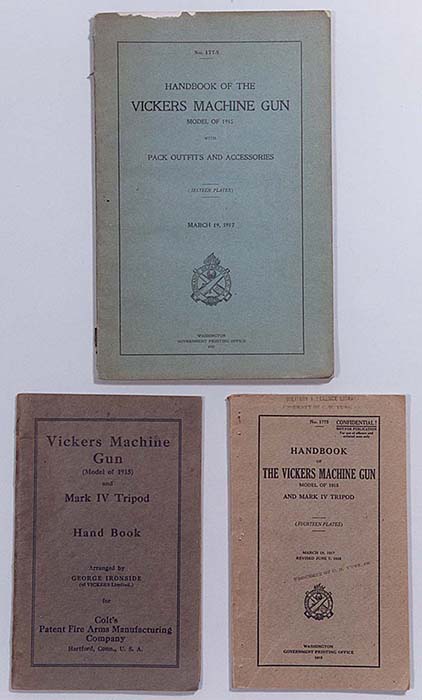
Since most of the U.S. stock of Colt Vickers Model 1915 were sent to Great Britain, who ultimately destroyed them, it makes unmodified or unaltered original Colt Vickers Model of 1915 machine guns extremely rare today with maybe two dozen or so examples in private collections. I say unmodified or unaltered because after World War I the Colt Vickers Model of 1918 aircraft guns the government had left were disposed of on the open market and could be bought for as little as $7.75 each! Since these guns were of the same basic construction and design as the ground infantry gun, and spare parts were available, a number of dealers modified these M1918 aircraft guns into the M1915 ground infantry configuration.
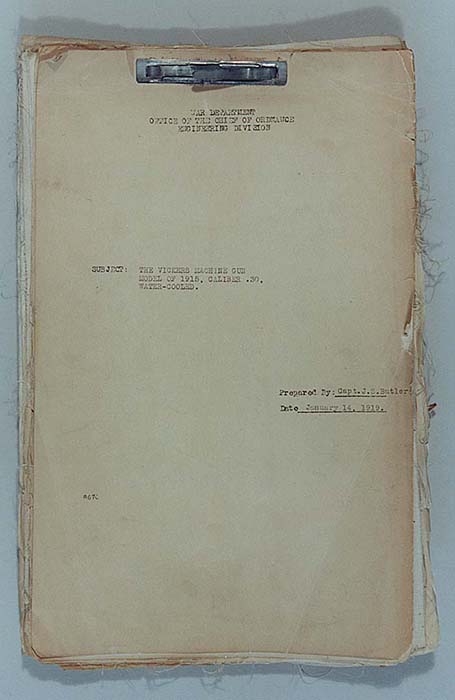
Some of the conversions are obvious and others will need a well-trained eye to detect. Things to look for include seeing if the air-cooling louvers on the jacket of the aircraft gun have been closed up and welded. (You may need a flashlight and a mirror to check from the inside.) If the entire end cap and jacket have been replaced with an infantry end cap and water jacket, then check the serial number located at the bottom of the end cap and see if it matches the serial number located on the inside of each side plate and on the bottom of the trunnion block. (The number on the top of the end cap is not the gun serial number but an army control number.) Other things to look for include having the correct top cover with the same sight as is found on the Browning M1917, and the spade grips should be made of plastic, not wood. And, among the finer points, look to see if the gun had ever been deactivated by having the side plates deformed or cut and welded back together. Also, look at the rivet heads on the side plates to see if they have been removed, replaced or reseated.
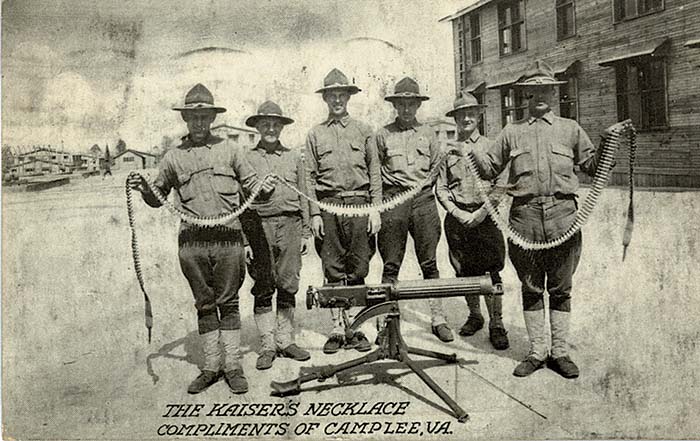
The U.S. Colt Vickers is essentially a licensed copy of the British Vickers Mk. I. Obvious differences are, of course, the barrel, lock and feedblock to accommodate the U.S. cartridge. The muzzle booster does not have the armored cone attachment that became standard on the British model. As mentioned above, the rear sight and spade grips are different. The condensing hose is also the same as is used on the M1917 Browning water-cooled which is different than the British version. But the main “first glance” visual clue as to whether U.S. or British made is the “Browning” type of rear sight. The tripod is a copy of the British Mk IV tripod except the U.S. rear leg has a flattened “shovel” foot.
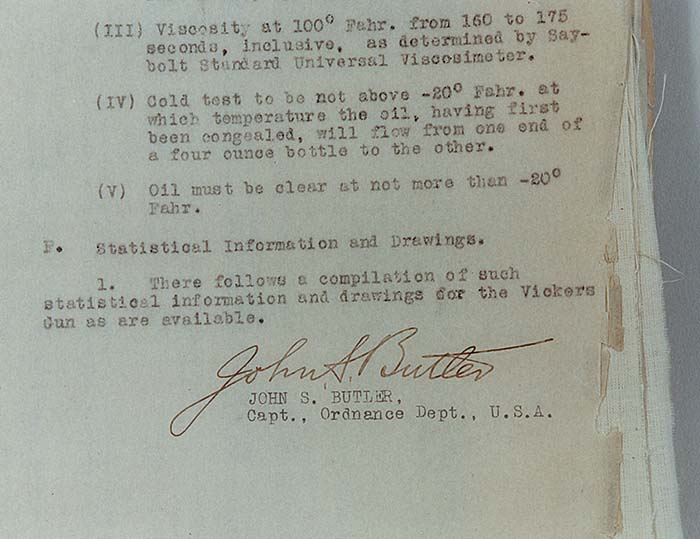
The Vickers design, an improvement of the Maxim design, has endured active military usage in the British armed forces for over 60 years and can still be found in use today in some third world countries. That the United States actually made a good decision in 1915 to use this type of weapon as a stop gap measure until the Browning was able to be fielded showed that while always late, it was better than never.
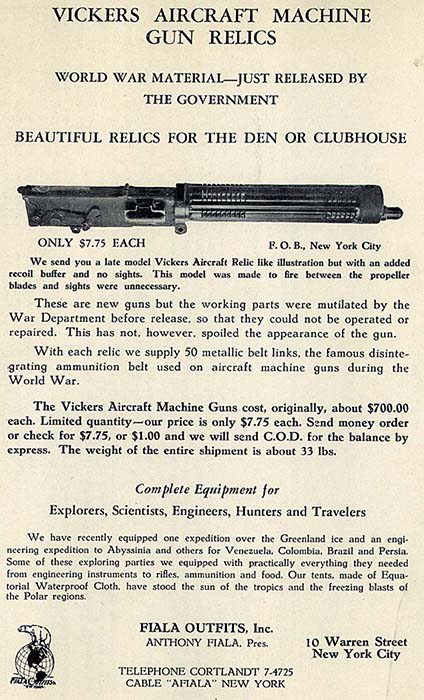
Historical note: Stembridge Gun Rentals Inc, of Glendale California, registered 10 of the 1915 Colt Vickers Ground guns in 1934, and 5 of the “Air” version in 1934 as well. These were all sold out in the SGR inventory disposition by LMO.- Dan Shea
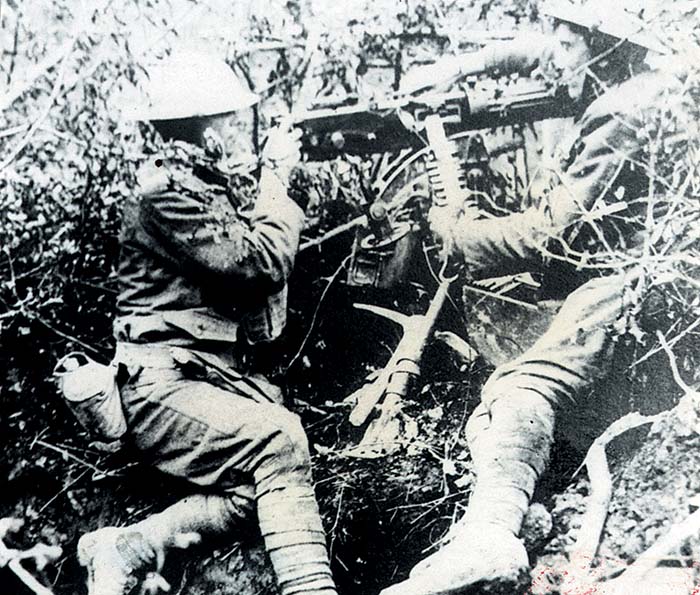
| This article first appeared in Small Arms Review V3N10 (July 2000) |




